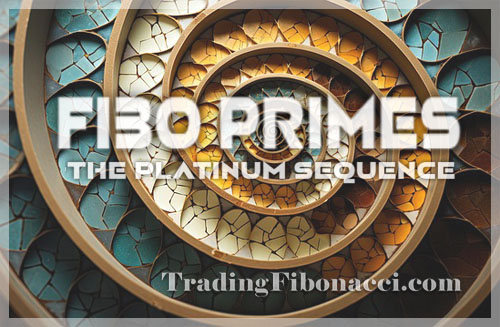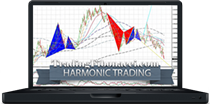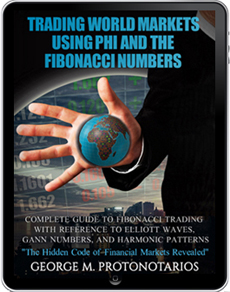Guides
 The Platinum Sequence of Fibonacci Primes
The Platinum Sequence of Fibonacci Primes
This study combines the logic of Fibonacci numbers with prime numbers and Fibonacci ratios to construct a novel numerical sequence. It was originally published on TradingCenter.org (Giorgos Protonotarios, 2021)
By starting with the Fibonacci sequence, next integrating prime numbers, and finally merging both through a state of proportional balance (2.62/6.85).
🏛️ The Fibonacci Sequence – The Foundation
The Fibonacci sequence is a mathematical progression where each term equals the sum of the two preceding terms.
Initial Fibonacci numbers:
0, 1, 2, 3, 5, 8, 13, 21, 34, 55, 89, 144, 233, 377, 610, 987, 1,597, 2,584, 4,181, 6,765, 10,946, 17,711, 28,657, 46,368, 75,025, 121,393, 196,418, 317,811, 514,229…

Trading with Fibonacci Mathematics
Fibonacci mathematics can help traders uncover the hidden proportionality in market behavior. Fibonacci extension analysis examines the extent of primary trends and countertrends to identify key reversal zones—levels where a trending market may lose momentum and reverse. » Fibonacci Sequence and Phi
Calculating the Basic Ratios Using the Fibonacci Sequence
The Fibonacci sequence begins as follows: 0, 1, 2, 3, 5, 8, 13, 21, 34, 55, 89, 144, 233, etc. This sequence can be broken down into ratios. These Fibonacci ratios are derived by dividing one number in the sequence by another.
Excluding the initial numbers, we observe that:
✅ Every number is approximately 1.618 times the preceding number.
✅ Every number is approximately 0.618 of the number that follows it.
Note that 1.618 is known as the golden ratio, and its inverse is 0.618.
Key Ratios for Financial Trading
In financial trading, the key Fibonacci ratios are 0.236, 0.382, 0.618, 1.618, 2.618, and 4.236. Many traders also use 0.5 and 1.0.
Table: Key Fibonacci Ratios for Financial Trading
|
0.236 |
1.000 |
|
0.382 |
1.618 |
|
0.500 |
2.618 |
|
0.618 |
3.618 |
|
0.786 |
4.236 |
The Fibonacci sequence produces useful trading tools such as Fibonacci Retracement and Fibonacci Extensions.
eBook: Trading World Markets Using Phi and the Fibonacci Numbers
The Complete Guide to Fibonacci Trading and Phi by George M. Protonotarios
 The complete guide to Fibonacci trading and Phi, with references to Elliott Waves, Dow Theory, Gann Numbers, and Harmonic Patterns, designed for successful trading in the global financial markets—including Forex currencies, stocks, indices, metals, and energies.
The complete guide to Fibonacci trading and Phi, with references to Elliott Waves, Dow Theory, Gann Numbers, and Harmonic Patterns, designed for successful trading in the global financial markets—including Forex currencies, stocks, indices, metals, and energies.
🔗 Links: » Find the Book at Amazon (ePub) | » Find the book in .PDF
Introduction to the "Trading World Markets" Book
This book covers a wide range of trading theories and methodologies involving Fibonacci numbers and their applications. It includes all the basic Fibonacci trading practices and tools based on Fibonacci ratios. Phi and Fibonacci numbers are not just another technical analysis tool; Phi proportions appear everywhere—in art, architecture, the spiral of our DNA, and even in natural plant formations.
The first chapter explores the mathematical properties of Phi and its applications beyond financial markets. The following chapters cover Dow Theory, Elliott Wave Theory, and Gann numbers. At the end of each chapter, you’ll discover how these theories relate to Fibonacci numbers. You’ll also learn how to use Fibonacci numbers to create a trading system based on Fibonacci Moving Averages (MAs). Additionally, the book explains popular Fibonacci tools such as Fibonacci Retracement, Fibonacci Extension, and Fibonacci Fan. Two chapters focus on Harmonic Trading and Harmonic Patterns—one of the most advanced trading techniques, entirely based on Fibonacci proportions. Six basic harmonic patterns are detailed, with their properties and chart examples. The final chapter discusses money management and how the irrational brain affects our daily decision-making.
Read more: eBook Trading Using Phi and the Fibonacci Numbers
Fibonacci Trading

Uncovering the hidden proportions underlying market behavior...
🎯 Explore Fibonacci trading tools and tutorials:
» Combining Fibonacci with S&R
» Combining Fibonacci with TAs
» MT4 MT5 Fibonacci Indicators
📌 Discover the Advice from Market Gurus:
📖 eBOOK: TRADING WORLD MARKETS USING PHI AND THE FIBONACCI NUMBERS {by G. Protonotarios}
A Guide to Fibonacci Trading with Insights from Elliott Waves, Gann Numbers, and Harmonic Patterns..
► ePub at Amazon | ► PDF Version
Online Forex Brokers
Compare Online Brokers for International Traders: » Compare ECN/STP Brokers
Trading Education
2025 Holidays
 |
|
| Date | Holiday |
|
|
|
|
|
|
|
|
|
|
|
|
|
|
|
|
|
|
|
|
Chart Patterns

📊 Identify and Trade High-Probability Chart Patterns:
» Time Frames and Trading Styles

📈 Engaging in Global Market Trading





